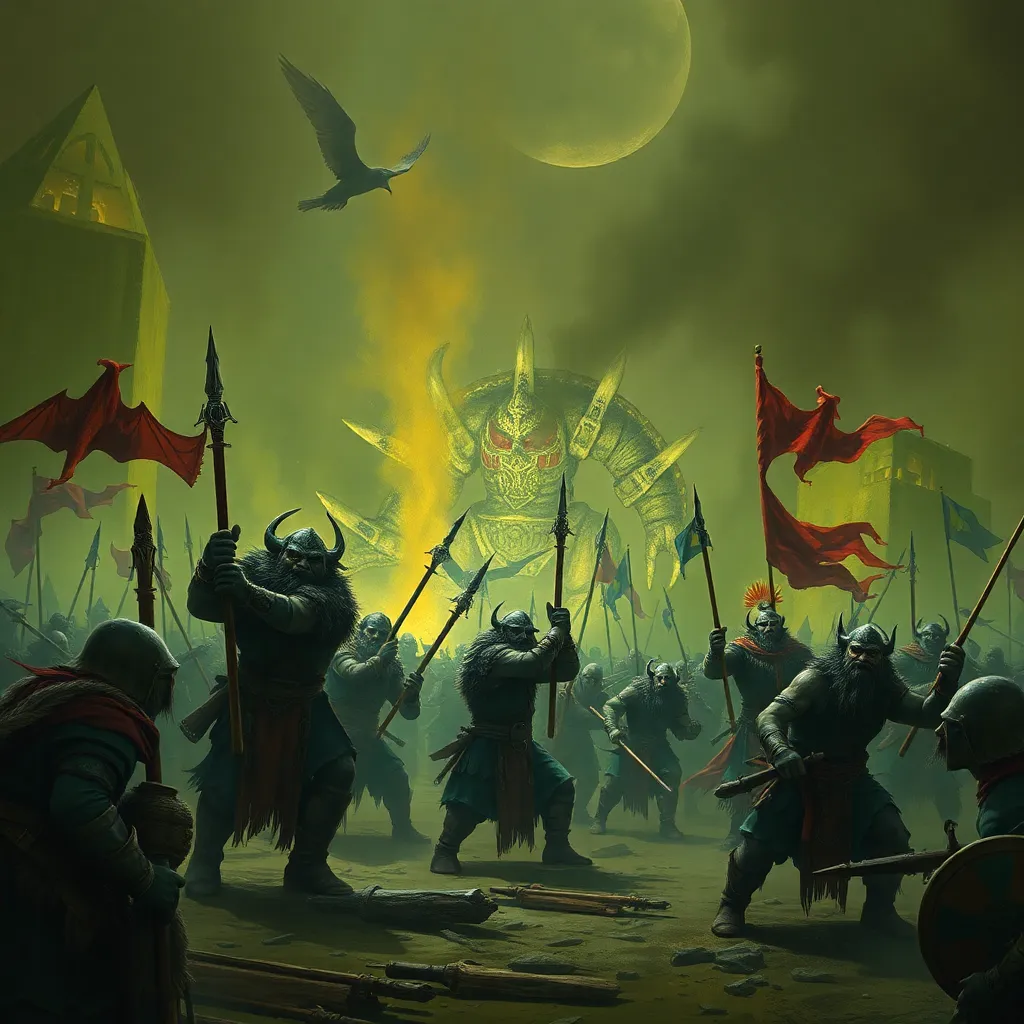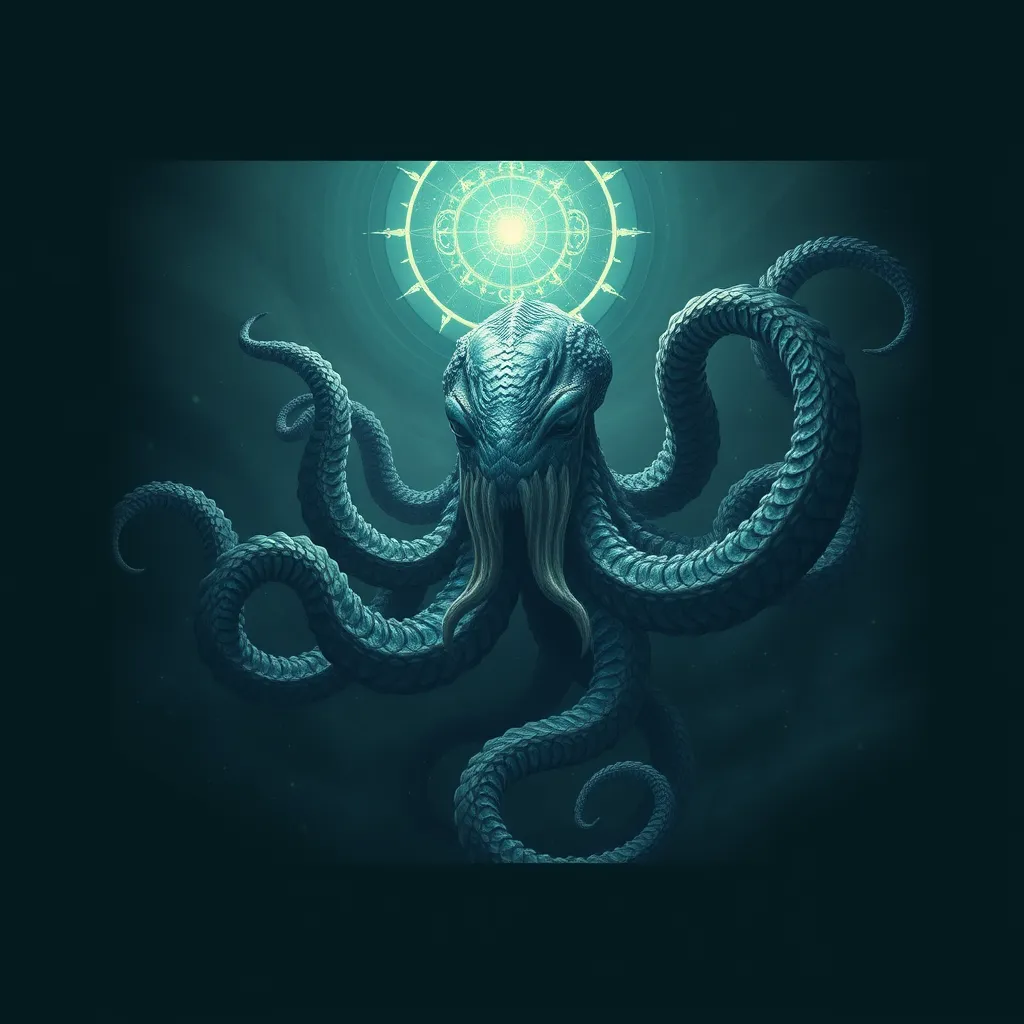The Valkyries of Odin: Exploring the Divine Warriors of the Allfather
I. Introduction
Norse mythology, with its rich tapestry of gods, goddesses, and mythical creatures, has captivated the imagination of people for centuries. At the heart of this mythological narrative lies Odin, the Allfather, a complex figure embodying wisdom, war, and poetry. Among his most intriguing servants are the Valkyries, divine warrior maidens who play a crucial role in the fate of heroes and battles.
The Valkyries represent not only the power of choice in life and death but also the cultural values of bravery and honor. They are integral to the Norse cosmology, serving both as guides for the fallen and as agents of Odin’s will. This article delves into the origins, roles, characteristics, and enduring legacy of the Valkyries in Norse culture and beyond.
II. The Origin of the Valkyries
A. Etymology of the term “Valkyrie”
The term “Valkyrie” comes from the Old Norse word “valkyrja,” which means “chooser of the slain.” This etymology reflects the primary duty of the Valkyries: to select the warriors who would die in battle and those who would be taken to Valhalla, Odin’s hall of the slain.
B. Historical references to Valkyries in Norse texts
Valkyries are mentioned in various Old Norse texts, including the Poetic Edda and the Prose Edda. These texts provide insight into their roles and characteristics, often portraying them as fierce and beautiful maidens who ride through the sky on horseback.
C. The Valkyries’ connection to the goddesses and fate
Valkyries are often associated with the Norns, the goddesses of fate who weave the destinies of both gods and men. This connection emphasizes their role in determining the outcome of battles and the fates of heroes.
III. The Role and Duties of Valkyries
A. Selecting slain warriors for Valhalla
One of the primary functions of the Valkyries is to choose which warriors will die in battle and which will be taken to Valhalla. This selection process underscores the idea of honor in death, as only the bravest warriors are deemed worthy of Odin’s hall.
B. Guiding the souls of the fallen
After selecting the slain, Valkyries guide their souls to Valhalla, where they will prepare for Ragnarok, the final battle of the gods. This journey is not only a physical one but also a spiritual transition from life to death.
C. The Valkyries’ involvement in battles and warfare
The presence of Valkyries on the battlefield was said to inspire fear in enemies and courage in the hearts of warriors. They could influence the tide of battle, embodying the chaos and fate that defined warfare in Norse culture.
IV. Characteristics and Depictions of Valkyries
A. Physical attributes and attire
Valkyries are often depicted as stunningly beautiful maidens, wearing helmets, armor, and carrying shields and spears. Their attire reflects their warrior status, combining femininity with the strength of a warrior.
B. Personality traits and abilities
The Valkyries are characterized by their bravery, loyalty, and fierce determination. They are not only warriors but also possess the ability to shape the fates of men, reinforcing their dual role as both guides and judges.
C. Artistic representations in literature and art
Throughout history, Valkyries have been depicted in various forms of art, from medieval manuscripts to modern paintings. They are often portrayed in dynamic poses, suggesting movement and action, symbolizing their role in battle.
V. Valkyries in Norse Literature
A. Analysis of key texts featuring Valkyries (e.g., “Völsunga saga,” “Grímnismál”)
Key texts such as the “Völsunga saga” and “Grímnismál” provide rich narratives that highlight the Valkyries’ roles and interactions with heroes. They often appear as both supporters and challengers, emphasizing their multifaceted nature.
B. The Valkyries’ portrayal in poetry and sagas
In Norse poetry, Valkyries are celebrated for their beauty and martial prowess. They are often depicted as both protectors and arbiters of fate, reinforcing their significance in the landscape of Norse myth.
C. Modern interpretations and adaptations in popular culture
The image of the Valkyrie has evolved in modern culture, appearing in literature, films, and video games. These adaptations often emphasize themes of empowerment and strength, connecting contemporary audiences with ancient myths.
VI. Valkyries and Their Relationship with Odin
A. Odin’s role as the Allfather and leader of the Valkyries
As the Allfather, Odin commands the Valkyries, entrusting them with the selection of the slain and the guidance of souls. His complex relationship with them reflects themes of power, loyalty, and sacrifice.
B. The dynamics of power and loyalty between Odin and his warriors
The Valkyries’ loyalty to Odin is paramount, as they serve his will in determining the fate of warriors. This dynamic highlights the interplay between divine authority and the autonomy of these warrior maidens.
C. Symbolism of the Valkyries as embodiments of Odin’s will
The Valkyries symbolize Odin’s influence over life and death, acting as his agents in the mortal realm. They embody his ideals of bravery and honor, reinforcing the cultural values of the Norse people.
VII. The Valkyries in Modern Culture
A. Influence on contemporary literature, films, and video games
In modern culture, Valkyries have been portrayed in various media, including films like “Thor” and video games such as “God of War.” These representations often highlight their strength and complexity, appealing to contemporary audiences.
B. The resurgence of interest in Norse mythology
The growing fascination with Norse mythology has led to a resurgence of Valkyries in popular culture. Their stories resonate with themes of empowerment, making them relevant figures in today’s discussions of gender and strength.
C. Valkyries as symbols of empowerment and strength
Valkyries are increasingly viewed as symbols of female empowerment, representing strength and independence. This modern interpretation contrasts with their traditional roles, showcasing their adaptability in contemporary narratives.
VIII. Conclusion
The Valkyries hold a significant place in Norse mythology, embodying the values of honor, bravery, and the complex nature of fate. Their enduring legacy continues to inspire fascination and reinterpretation in modern culture, highlighting their relevance in today’s society.
As we explore the rich tapestry of Norse mythology, the Valkyries stand out as powerful figures whose stories resonate across time. Their roles as divine warriors, guides of souls, and embodiments of Odin’s will invite us to reflect on themes of choice, power, and the nature of life and death.
For those intrigued by the stories of the Valkyries and the world of Norse mythology, there is much more to discover. Whether through ancient texts or modern adaptations, the legacy of these divine warriors continues to inspire and captivate.



